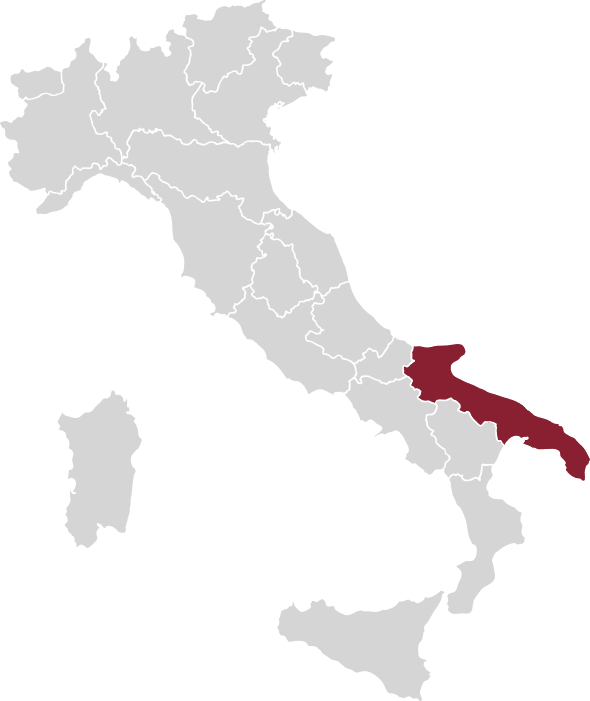Borgo del Mandorlo
BORGO DEL MANDORLO is a tribute to Apulia, to its history. In the Roman times, Pliny the Old owned the wonderful and special marvels of the lands now in the provinces of Taranto and Lecce; one of this places can be visited and has his name: the Plinian source.
It’s a large natural cave where light enters through a small space. The entrance has a circular wall of sandstone. The really marvellous thing is that an almond tree has grown there. It is a tree loved by the Apulian inhabitants and we have drawn our inspiration for ther name of our Apulian wines. Enchanting wines, full bodied and intense that will delight you sip after sip
Appassimento Rosso Puglia IGT
- GRAPES: Red Grapes
- APPELLATION PUGLIA IGT, VINO PASSITO
- PRODUCTION AREA: Apulia Region
- CLIMATE: The climate is warm and temperate, with significant rainfall all year round. During the summer the African winds cause rapid and marked rise of the thermometer and high temperature variation
- HARVEST: End of September, beginning of October
- STORAGE TIME: 4/5 years
- BOTTLE SIZE: 750 ml
- SERVING. TEMP.: 18-20 °C
- ALCOHOL CONTENT: 14,5% vol.
 Intense purple colour, tending to amber with ageing
Intense purple colour, tending to amber with ageing
 Full and persistent at the nose
Full and persistent at the nose
 Full body and well-balanced on the palate, this wine has a perfect balance between soft tannins and acidity
Full body and well-balanced on the palate, this wine has a perfect balance between soft tannins and acidity
 Pleasant accompaniment to savoury first courses, roasts, game and aged cheeses
Pleasant accompaniment to savoury first courses, roasts, game and aged cheeses

VINIFICATION:
In the last ten days of September the perfect ripeness of the grapes is reached and winemaking process starts from the vine. The withering process takes place in the vineyard by cutting the petiole of grapes but leaving them on the vine for about 15-20 days, during this period 50% of their weight evaporate. This will allow for wines with typical notes of ripe fruits, such as plums and raisins. The hand-picked grapes are pressed and the fermented. The skins are left in contact with the must for a long period to extract flavours and the characteristic red colour. Subsequently the wine is left to complete the malolactic fermentation; this contributes to the peculliar complexity of this wine.





